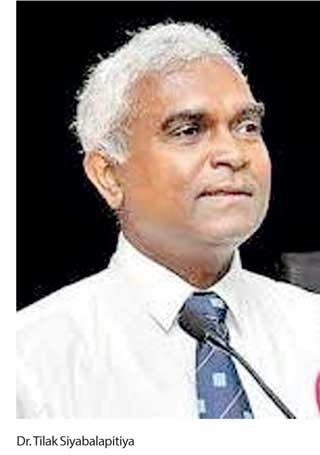Reply To:
Name - Reply Comment
Sri Lanka’s power sector crisis cannot be resolved in the immediate future nor in the short-term while no amount of dollars would end the daily power cuts that are currently in force, according to a leading power and energy sector expert.
 Energy consultant, Dr.Tilak Siyabalapitiya says Sri Lanka’s current power crisis was decades in the making and what the country is experiencing today is only one tipping point and would continue to experience severe hardships by way of blackouts and scheduled power cuts unless experts and policymakers get together to set up new power plants to add more capacity to the grid.
Energy consultant, Dr.Tilak Siyabalapitiya says Sri Lanka’s current power crisis was decades in the making and what the country is experiencing today is only one tipping point and would continue to experience severe hardships by way of blackouts and scheduled power cuts unless experts and policymakers get together to set up new power plants to add more capacity to the grid.
Speaking at a recent television interview, he said there are no immediate to short-term solutions to the crisis and the solutions should have been sought many years ago.
“It takes 5 years at a minimum to 10 years to put up a power plant with a substantial investment,” Dr. Siyabalapitiya said when he was pressed by the host for immediate solutions to end the daily power cuts.
Sri Lanka was forced into imposing daily power cuts from around mid February after the country ran out of fuel to run its thermal power plants due to the shortage of dollars in the country to import diesel and furnace oil.
But, it soon turned out even with all the thermal plants running at capacity. Sri Lanka could not prevent daily power cuts because of the prolonged dry weather, which brought down the hydropower capacity to around 20 percent.
Dr. Siyabalapitiya said power plants must be constructed now to prevent recurrence of power cuts in future using all possible energy sources such as coal, LNG, renewable energy sources and nuclear power if the government decides to do so.
Although coal power is the cheapest at present, it is uncertain if Sri Lanka can put up any more coal power plants as it went ahead and became a signatory to the COP 26 Climate Summit Net Zero Emission Pledge by 2050.
The recent policy errors such as going to the extent of losing one’s energy independence by appeasing climate activists in the US and globally has put the world in severe danger of having to endure surging gasoline prices at the pump and rising household power prices.
The Russia-Ukraine crisis and the resulting embargoes over Russian energy exports have put the world in more peril as low income, energy dependent countries such as Sri Lanka have run into significant economic and societal turmoil.
It was also a few days ago, the Public Utilities Commission of Sri Lanka Chairman Janaka Ratnayake expressed similar views to that of Dr. Siyabalapitiya that he too doesn’t see the end to the current spate of power cuts until Sri Lanka gets rains to its catchment areas.
Meanwhile Dr. Siyabalapitiya said it is prudent to raise the power prices to cut massive losses recorded at the Ceylon Electricity Board (CEB).